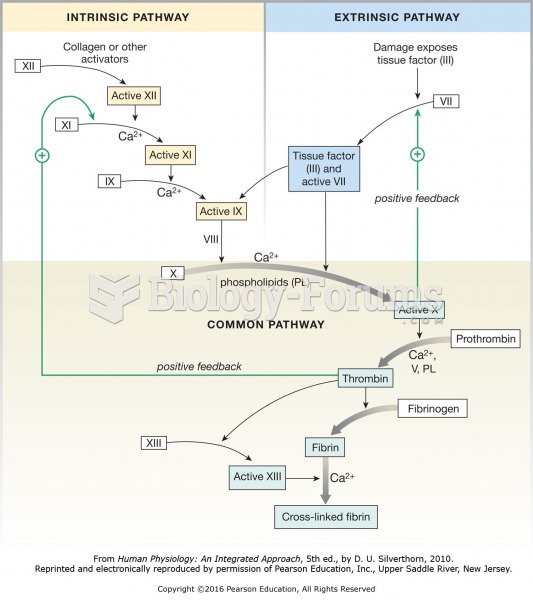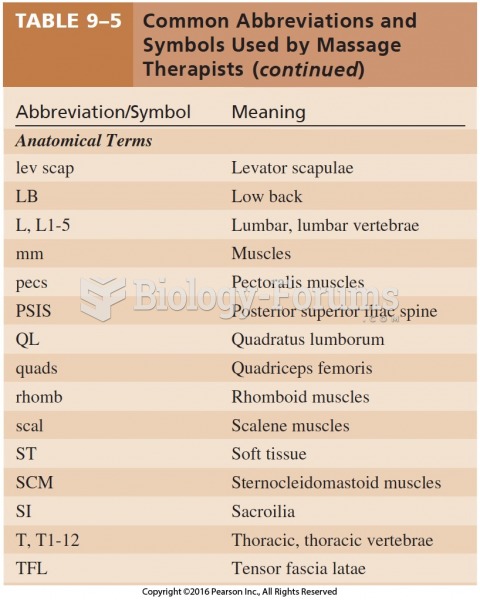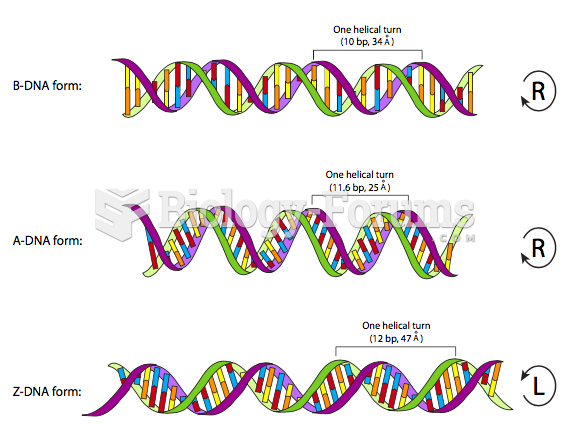|
|
|
Women are 50% to 75% more likely than men to experience an adverse drug reaction.
Cancer has been around as long as humankind, but only in the second half of the twentieth century did the number of cancer cases explode.
Adult head lice are gray, about ? inch long, and often have a tiny dot on their backs. A female can lay between 50 and 150 eggs within the several weeks that she is alive. They feed on human blood.
Pink eye is a term that refers to conjunctivitis, which is inflammation of the thin, clear membrane (conjunctiva) over the white part of the eye (sclera). It may be triggered by a virus, bacteria, or foreign body in the eye. Antibiotic eye drops alleviate bacterial conjunctivitis, and antihistamine allergy pills or eye drops help control allergic conjunctivitis symptoms.
If you could remove all of your skin, it would weigh up to 5 pounds.







